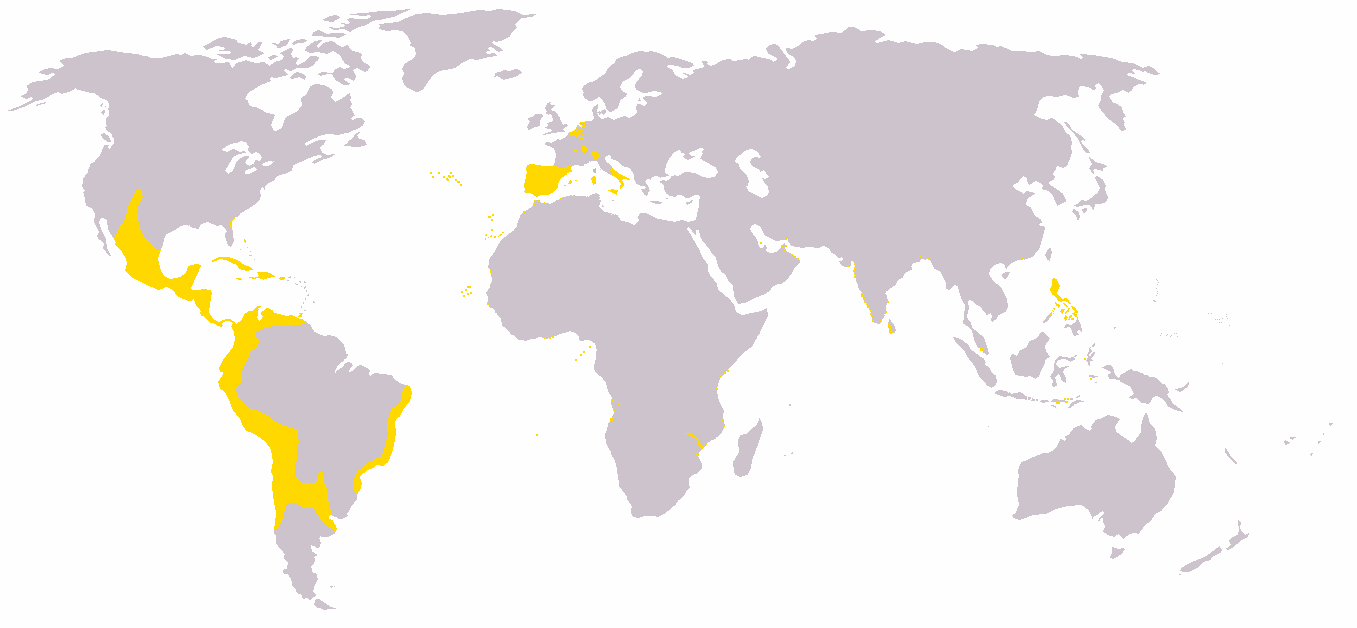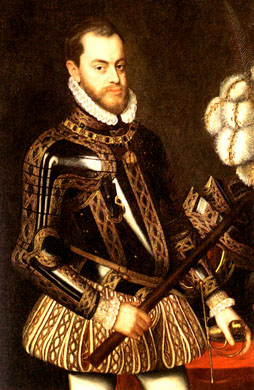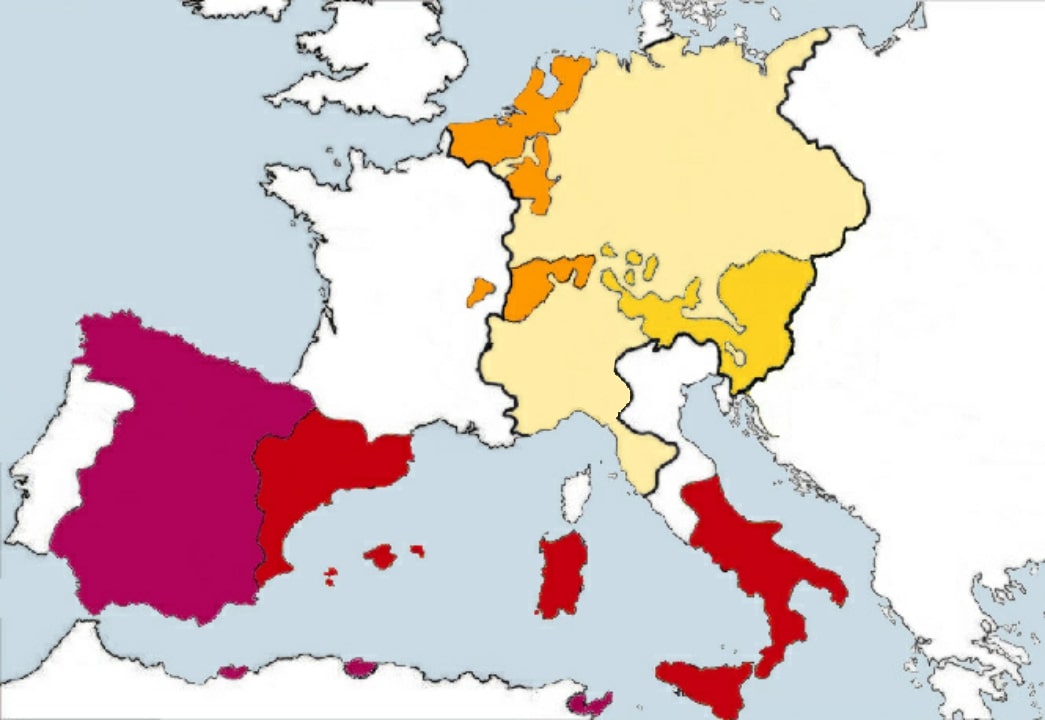Okay, quiz time. After reading
Part 1 of the series, what two things have we learned? That's right:
a) Don Blas de Lezo is hard as fuck
b) In the early 18th century, the British and Spanish did not play well together
The latter makes sense: as two of the three main nations still trying to craft empires at this time, it was natural that the two superpowers would butt heads on occasion. But in the early 1700s, Britain (and we can call them Britain as of 1707) and Spain were like two young brothers - they simply refused to get along.
During Blas de Lezo's lifetime, the two countries went to war three times: in the war of the Spanish Succession from 1701-1714, in the minor war of 1727-1729, and the awesomely-named War of Jenkins' Ear 1739-1748. The final one is notable for a few reasons, however.
The first is that it will be the ultimate proving ground for the longtime scourge of the Royal Navy, our hero, Don Blas. Second, the Anglo-Spanish War of 1739 would mark a new low (perhaps an all-time low) in the relationship of the two great nations. In previous wars, the fighting had been over tangible things: in 1701 it was thrones. In 1727 is was Gibraltar. The War of Jenkins' Ear was fought essentially because relations had degenerated to that point. The rivalry - and the hatred - between Britain and Spain, and between Britain and the Bourbons, was simply beginning to boil over.
Following the War of the Spanish Succession, Spain had granted England an
asiento, or, the right to sell slaves to Spanish colonies. After the Anglo-Spanish War of 1727-1729, however, Spain won the right to stop and search British vessels in order to ensure that their business in Spanish waters was
asiento-related. In the early 1730s, however, relations between the two navies hit rock bottom. Being stopped and boarded at random was an extreme inconvenience for British slavers, and at the same time, the Spanish navy began to grow more and more suspicious of British traders for abusing their trade agreement. Imagine that any time you drove, you were liable to be pulled over by a policeman who is certain that you are hiding narcotics in your car, which he can search without a warrant. Rising tensions seem understandable. Stories like the one of shipmaster Robert Jenkins became more and more common:
In 1731, Jenkins'
Rebecca was stopped by the Spanish
La Isabella, accused of piracy, and boarded. Jenkins showed the Spanish sailors his slaves, and, for good measure, insulted the Spanish commander, one Julio Leon Fandino. In return, Fandino drew his cutlass and cut off Jenkins' ear, picked it up and handed it back to him. A merchant, Jenkins couldn't do anything about it at the time, but what he could do was talk. He returned to Britain and told his story to anyone who would listen, including the King of England. In March 1738, Jenkins brought his story, and his ear, to the House of Commons.
Jenkins' story, and ones like it, led to significant pressure from the British public, and in 1739 a British squadron was sent to Gibraltar (which was by then recently under British control), as well as reinforcements to the Caribbean. Britain was preparing for war with Spain for the third time in 40 years. When Spain demanded financial compensation for threatening the Spanish population of Gibraltar, Britain asked the Spanish to renounce their 'visitation clause' to Gibraltar (it is important to remember the importance Gibraltar played in the previous two wars of the 18th century). Spanish King Phillip V said no thanks, but we will annul the
asiento and seize all British ships in Spanish harbors. Britain declared war on October 23, 1739.
At this point, more than any practical offense, the boundless pride of the budding British Empire had been wounded. Future revered prime minister William Pitt couldn't resist an opportunity to insult the Spanish: "It is vain to negotiate and make treaties if there is not the Dignity and Valour to enforce the observance of them." The British, hubris stinging, decided, in the words of Lawrence James, "...that Spain had failed to uphold her obligations to Britain and therefore needed to be reminded of them in a way that would deter any future backsliding. The navy was the obvious means of bringing home to Spain the folly of meddling with British trade. The doctrine of the corrective use of seapower which later, and after many applications, would be known as gunboat diplomacy was born."
James also notes that little thought went into how the Spanish would be punished - the Commons had visions of "...the campaigns of Drake and Morgan with warships returning to British ports crammed with the silver and gold of the Spanish Indies." This is important, and it reminds me of an instance of the shoe being on the other foot: the 1588 Spanish Armada.
The Armada was launched hastily, with questionable intentions and incredibly poor planning and leadership. The result was one of the most embarrassing military failures in recorded history. The adventure on which the British were about to embark was not quite of that magnitude, but it was launched rapidly, for reasons that can be at best described as silly, and the results would reflect that. Like a slighted sibling, Britain wanted only to lash out in anger, and the War of Jankins' Ear was the result. James continues: "... a war, begun in anger, resolved itself into a series of blows delivered randomly against Spain's empire and trade."
James brings up another key point here. This was not a war fought in Barcelona, or Gibraltar. This war was fought primarily in the colonies. And, unlike the Caribbean fighting in the War of the Spanish Succession, these were not minor skirmishes or failed raids: Britain was playing for keeps. What came of the war would have a lasting impact on the Caribbean.
Shortly after Jenkins' testimony in the Commons in March, 1738, the House requested that King George II solve the issue with the Spanish. When treaty talks, the Convention of Pardo, dissolved in early 1739, George gave permission to the navy to explore means of maritime revenge on Spain on 10 July, and Vice Admiral Edward Vernon (I love old-timey navy names) and a squadron were dispatched to the West Indies ten days later, though the war was not official until mid-October.
On 22 November, Vernon and six ships of the line took the silver export town of Portobello, Panama in a 24-hour period. They remained there for three weeks until the vital structures of the town were destroyed (fortifications, docks, warehouses), then departed. As they had hoped, this assault severely damaged the town's financial and maritime capabilities.
The attack on Portobello had the English in high spirits. Vernon returned to England for the winter of 1739-40 as the toast of the empire. He spent much of 1740 as the guest of honor at elaborate parties and ceremonies. Several roads and areas in Great Britain were named for the victory, towers were erected, and Thomas Arne composed
Rule Britannia ("Rule Britannia, Britannia rule the waves!"). The fact that Portobello was a scarcely-defended shipping town was apparently of little concern (Vernon and his Caribbean ventures would continue to be remembered differently in Britain than in the rest of the world -- interestingly, the Royal Naval Museum website describes his attack on Portobello: "Against the odds, Vernon was able to not only capture the town's fort, but also the town itself."). In 1740, British imperialism was hardly 30 years old, and its citizenry, admiralty, and government were all excited at the prospect of expanding their empire in the West Indies, which at that point consisted largely of Jamaica and some other small holdings (Barbados, Bermuda, Virgin Islands, etc).

As a result, in 1741, Vernon was dispatched to the Caribbean again, this time not to attempt to maim Spain's colonial economy, but to challenge the very presence of Spain in the Caribbean. At the time, Spain had four main bastions of power in the West Indies: Santiago de Cuba, Vera Cruz in modern Mexico, Portobello, and Cartagena in Colombia. Santiago de Cuba was important as it was a stepping stone to the port city of Havana, which was an important port for all of Spanish America. Portobello was rendered useless for years to come, so the main targets for Vernon's second expedition were Cuba, Vera Cruz, and Cartagena. He chose the latter, and the effects would be long-lasting. A legend was born, a legend was tarnished, and the fate of the Caribbean sea was decided.
--
This is Part 2 of a three-part series on Don Blas de Lezo and his impact on the colonial world. Part 3 is written and should be up shortly, so be sure to check it out. Thanks for reading.



